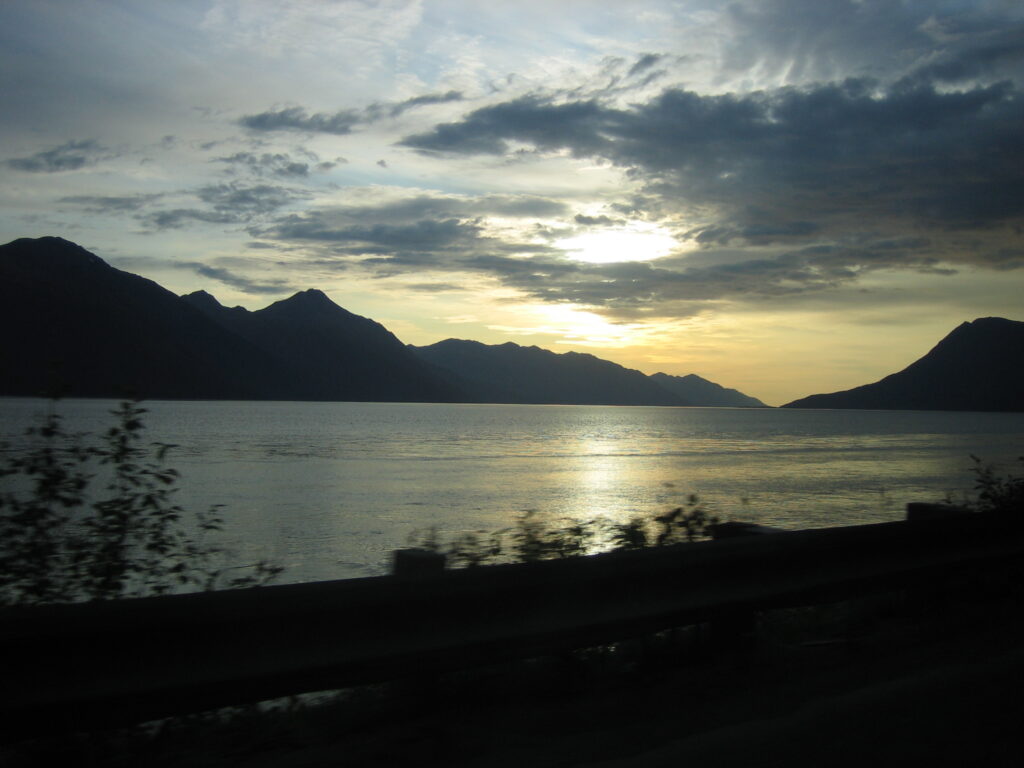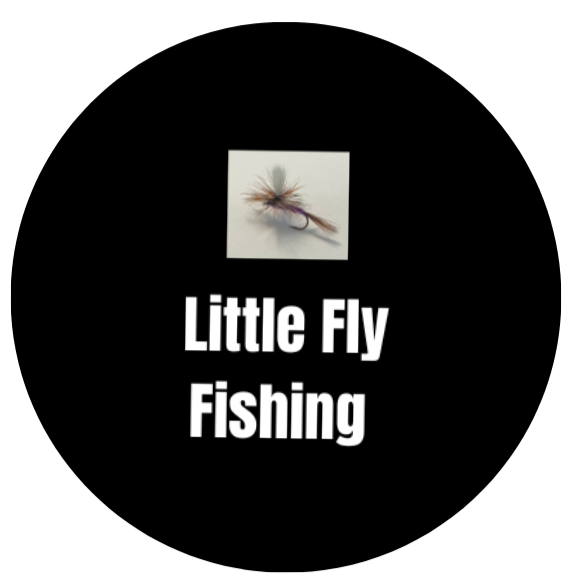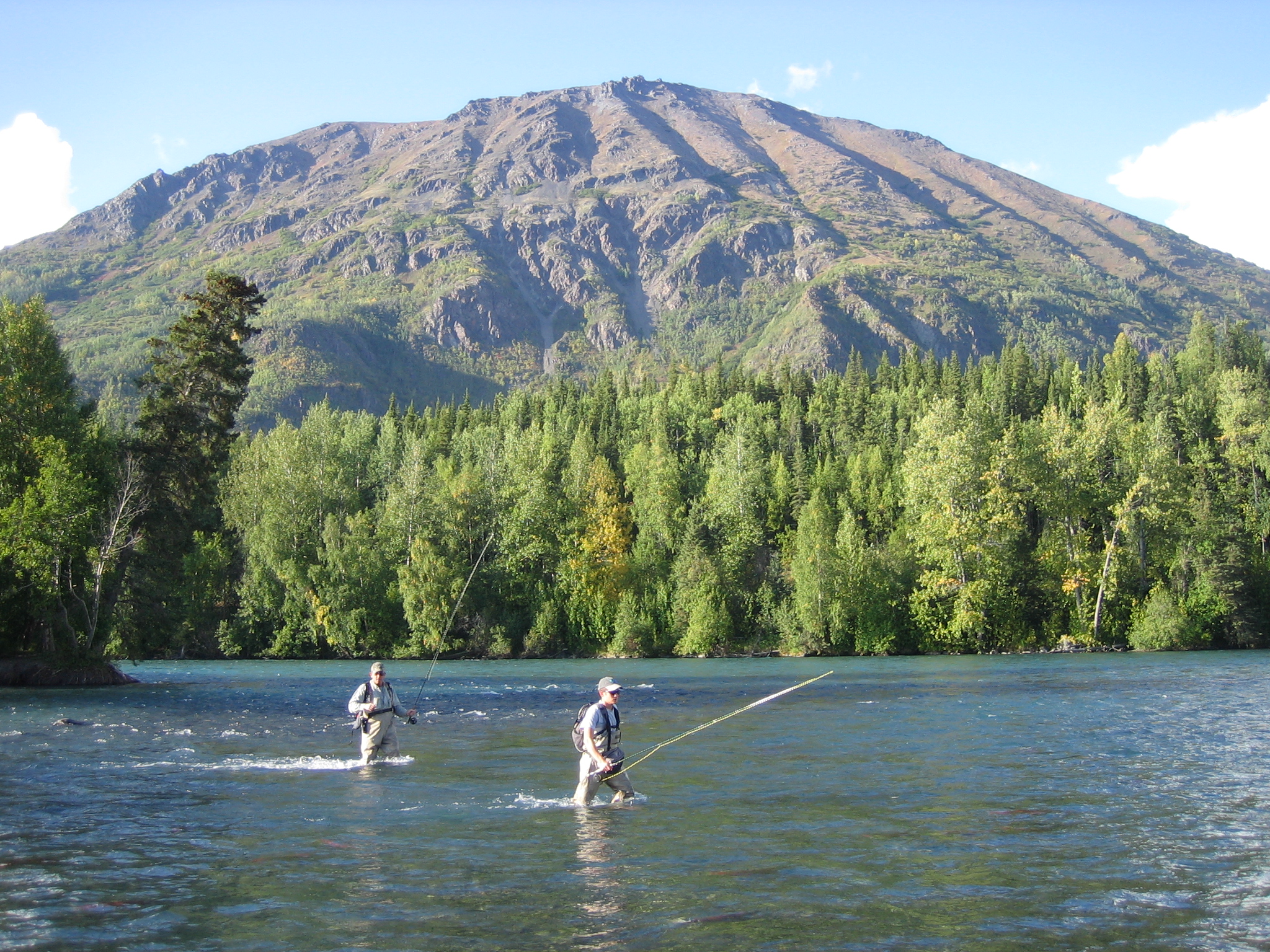In this post I’ll lay out some basics about fishing the Kenai Peninsula in Alaska and provide a simple DIY trip template. I’ve done variations of this trip a handful of times and I lived in Alaska for a couple years so I feel like I can offer some good advice on the topic.
About the Kenai Peninsula

The Kenai Peninsula in Alaska is famous for its breathtaking natural beauty and abundant wildlife. It offers some of the best road accessible fishing for salmon and trout in Alaska. The phrase “road accessible” is key. There are definitely better places to fish in Alaska but you need a boat or a plane to get there. Good fishing on the Kenai Peninsula is just a few hours drive from the Anchorage Airport, making this a great destination for the cost conscious angler who likes to explore on their own.
The peninsula is about 150 miles long and 100 miles wide, with a highway running most of its length. The Kenai Mountains run along the eastern edge of the peninsula, while the western side is bordered by the Cook Inlet. The Kenai National Wildlife Refuge covers a significant portion of the peninsula, providing protected habitat and lots of public access opportunities. Other notable public land includes Kenai Fjords National Park, Kachemak Bay State Park, and Chugach National Forest. The southern part of the Kenai Peninsula is home to several glaciers, and the famous Harding Icefield. Notable towns on the peninsula include Soldotna, Homer, Seward, and Cooper Landing.
Fishing the Kenai River and Russian River
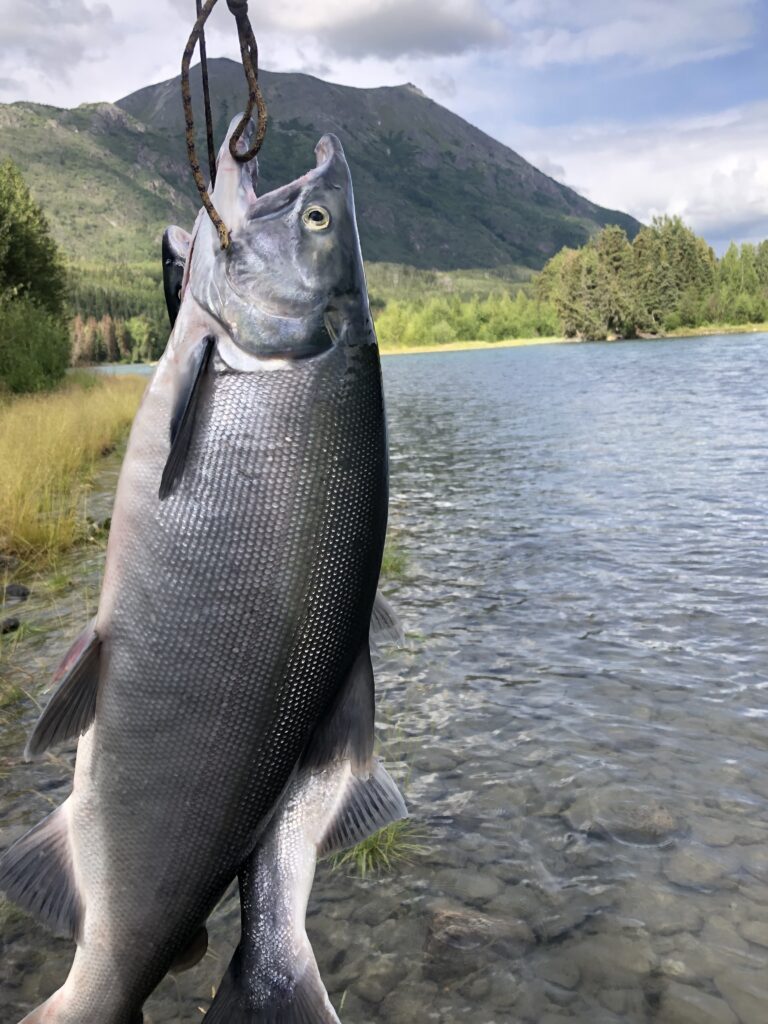
Alright, let’s get to the fishing. There are many good rivers to fish but the most iconic is the Kenai. It is spectacularly beautiful, boasts excellent runs of several salmon species, and holds huge rainbows and Dolly Varden. The Russian River, Kasilof River, and Deep Creek are also popular fishing spots.
The Kenai River starts at the outlet of Kenai Lake just east of the town of Cooper Landing. The river is big (4,000 to 8,000 cfs during summer) and milky blue colored from sediment in the glacial melt water that feeds it. The river flows west to Skilak Lake then continues west to empty into the Cook Inlet. Road access to the river is good from its start down to Jim’s Landing and this section is conducive to fishing on foot. There is even a ferry, near the confluence with the Russian River, that you can use to cross the river. The remainder of the river, upstream of Skilak Lake, can be accessed by boat or by foot in some places (very steep canyon walls prevent foot access in some areas). Downstream of Skilak Lake, the river is slower and there is reduced public access. The best way to fish the lower river is by boat.
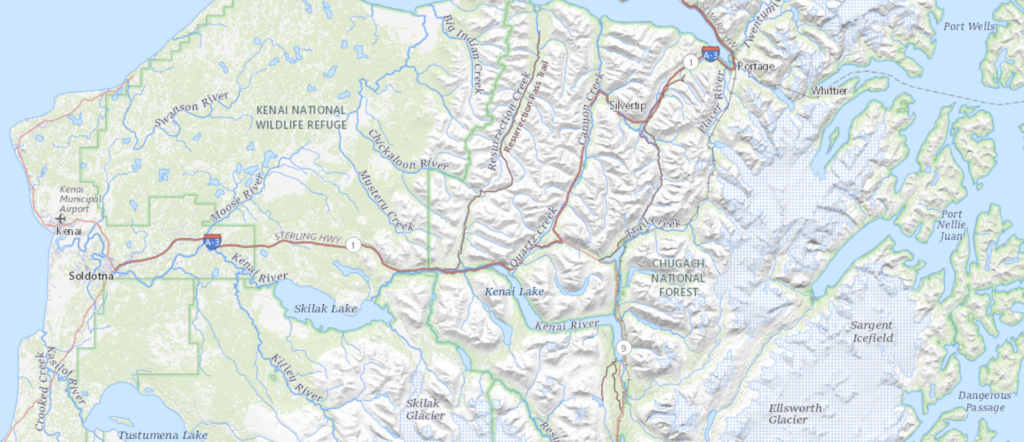
I like to fish the stretch from Kenai Lake down to Jim’s Landing. The area around the confluence with the Russian River is particularly attractive because you can cross the river on the ferry and you can also fish the Russian River (more on this below).
The Russian River is a tributary to the Kenai River that is known for excellent sockeye salmon runs, and big rainbows. It’s also crystal clear, in stark contrast to the milky blue opaqueness of the Kenai. The clear and relatively small water can make for some spectacular sight fishing to huge trout.
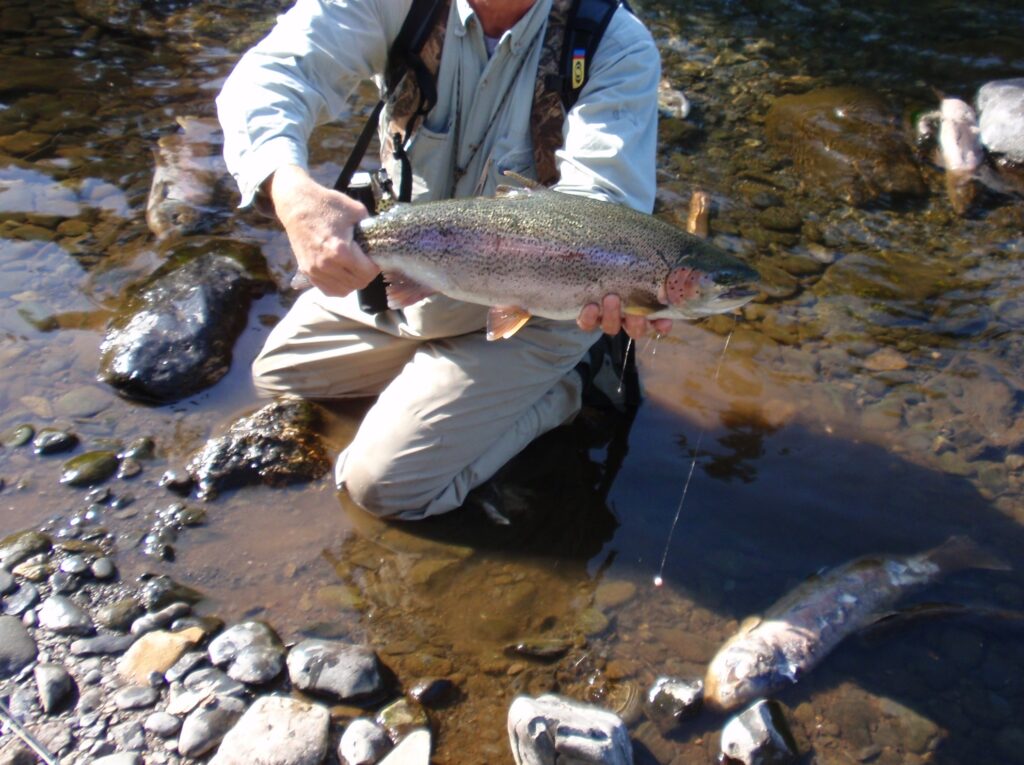
The Russian River flows north out of Upper Russian Lake and passes through Lower Russian Lake and over the Russian River Falls on its way to meet the Kenai River. The banks can be brushy with limited sight lines so bear awareness is very important here.
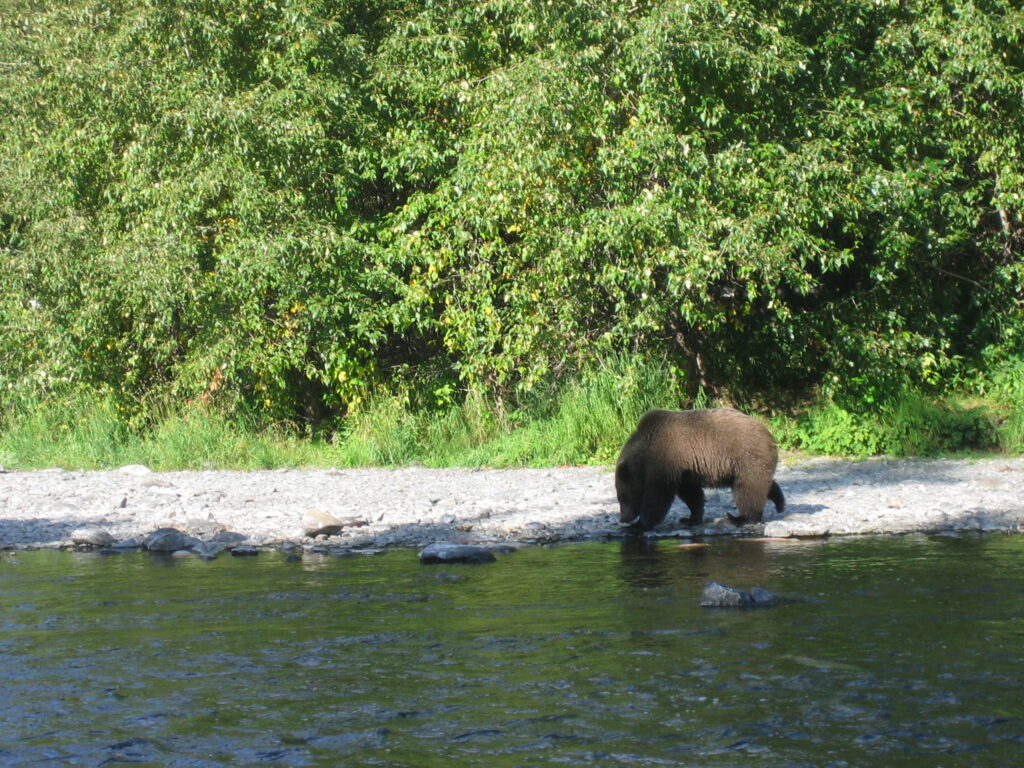
A Simple Itinerary for a Week-Long Fishing Trip to the Kenai Peninsula
Day 1: Arrival in Anchorage
- Arrive in Anchorage, Alaska, and pick up a rental car.
- Head to the grocery store for supplies.
- Drive to the Kenai Peninsula. The drive is scenic, so take your time and enjoy the views. Look for Beluga whales in the Turnagain Arm of the Cook Inlet. Look for dal sheep and mountain goats on the slopes above the road.
- Check-in to your cabin in Cooper Landing.
Day 2: Explore the Kenai River
- Spend the day fly fishing on the Kenai River. Catch salmon, trout, and charr all on the same day.
- Consider hiring a local guide who can take you out for a float.
Day 3 Explore the Russian River
- Head to the Russian River for a day of fishing. This river has crystal clear water, giving you a good chance for some epic sight fishing to huge trout. Start at the confluence with the Kenai and walk up stream. Alternatively you could hike the Russian Lakes Trail to get to the falls and lakes faster.
Day 4: Head Back to Your Favorite Spots on the Kenai or Russian
- Go back to the best spots from day 2 and day 3.
Day 5: Seward
- Drive to Seward and explore Resurrection Bay.
- Consider a fishing charter for some halibut or salmon fishing and sightseeing.
- A Kenai Fjords National Park boat tour is a great way to spend the day. If you like whales and glaciers this could be the highlight of your trip.
- Check out Exit Glacier. It’s a short walk from the parking lot to the terminus of the glacier.
Day 6: Homer
- Drive to Homer, known as the “Halibut Fishing Capital of the World.” This is kind of a long drive from Cooper Landing, a little over 2 hours, so you could plan to spend a night if you want to break up the drive.
- Spend your day exploring Homer Spit and its eclectic shops and restaurants. The is a manmade “pond” on the spit that offers fishing for salmon. It might feel a little silly but the fishing can be good.
Day 7: Crescent Lake or Crescent Creek
- Hike up Crescent Creek or go all the way to Crescent Lake for some good grayling fishing.
Day 8: Departure
- Drive back to Anchorage and catch your return flight home.
Important Considerations for Your Trip
There are lots of brown bears and black bears in this area. They like to fish too. Bear awareness is very important. Travel in groups, make lots of noise, carry bear spray, and give bears plenty of space.
Always check local fishing regulations. Salmon regulations can change very quickly depending on fish counts.
Plan for varied weather conditions. Summer in Alaska can be cold and wet at times. Bring appropriate clothing.
Time your trip for the species of salmon you want to catch. The Alaska Department of Fish and Game publishes fish count information here. You can look back at past season fish counts to see the best times of year to fish for a particular species in a particular river.
